Lucid Newsletter - December 2014
Happy Christmas greeting to all our readers, clients, collaborators

It has been a busy year for the Lucid team. A number of amazing new keys have been released and the popularity of the mobile app continues to inspire us to create bigger and better things in 2015.
One example has stemmed from key authors and users of the mobile app who have expressed the desire to capture observational data. Thanks to a project with the International Rice Research Institute (IRRI) and their Lucid based Rice Doctor app we are working to bring this to fruition. The Lucid mobile app will be a compelling solution, combining state of the art identification with user friendly data capture options. We�ll report more details of this early in 2015.
We�d also like to thank all our users whose continued support and feedback have made 2014 so successful. Expect new and innovative developments across our entire range of tools next year.
We wish you and your family all the best for 2015.
The Lucid Team
New keys
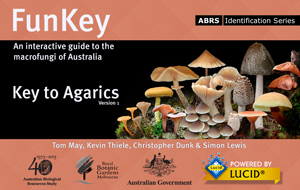 FunKey: Key to Agarics, an interactive key and information system for the genera of agarics occurring in Australia. Agarics are the gilled fungi, colloquially referred to as mushrooms and toadstools.
FunKey: Key to Agarics, an interactive key and information system for the genera of agarics occurring in Australia. Agarics are the gilled fungi, colloquially referred to as mushrooms and toadstools.
With FunKey you will be able to:
- Use an interactive key to quickly and accurately identify any of the 112 genera of agarics (under 159 taxa) reliably reported from Australia, from fresh or dried material;
- Learn about characters from an extensive Introduction to characters that includes methods of examination techniques;
- Understand the classification and arrangement of taxa from the Introduction to taxa, with detailed information also provided on Taxon Circumscription;
- Access hundreds of illustrated fact sheets on individual character states of the 115 characters used in the key;
- Access a fact sheet for each of the 159 taxa, including a description, notes on distribution, ecology and classification, along with a list of Australian species and a compilation of relevant references;
- Navigate quickly between taxa in the fact sheets using hyperlinks;
- View photographs of fruit-bodies and microscopic characters (for many genera), both from within the interactive key and also in the individual Taxon fact sheets;
- Follow up lists of references to further illustrations and other information on each Taxon fact sheet, and also in a combined bibliography of References;
- Consult a comprehensive Glossary of terms;
- Consult notes on agaric genera doubtfully recorded from Australia; and
- Find out who created FunKey and how the data were compiled.
Cost: $59.00 (+ GST if purchased in Australia)
Click here to purchase
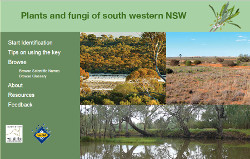
Plants and Fungi of south western New South Wales (updated) � A key to 1092 species (on-line player)
Click here to play this key
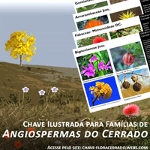
Plant families of the Brazilian savanna � A key to all the plant families and subfamilies (181) of angiosperms of the Brazilian Cerrado (on-line player)
Click here to play this key
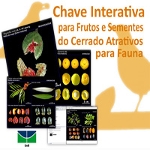
Fruits of the Brazilian savanna attractive to wildlife � a key to 155 of the most common fruit species of all genera found in the Cerrado (on-line player)
Click here to play this key
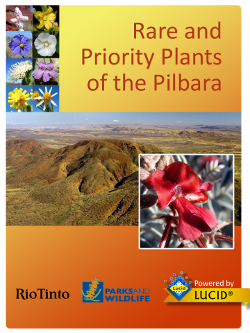
Rare and Priority Plants of the Pilbara (mobile app edition)
This field guide and identification tool for 183 Threatened and Priority flora known from the Pilbara bioregion includes all species currently listed as conservation taxa by the Department of Parks and Wildlife as well as species not yet recorded from the region but likely to be found there.
Developed as a collaborative project between Rio Tinto Australia and the Western Australian Herbarium, Rare and Priority Plants of the Pilbara provides the most comprehensive and up-to-date information available on these rare and important plants, and will provide a useful guide for environmental consultants, botanists, industry environmental officers, conservation planners and others with a need to understand the flora of the Pilbara. Since all information is packaged in the Lucid Mobile app, Rare and Priority Plants of the Pilbara can be used in the field in remote localities without web connections.
Each species is represented by a profile page including vernacular name, a botanical description, spotting features, and notes on ecology and distribution. All species are illustrated with the best available images, and current distribution is mapped. Species profiles can be accessed by taxon name and filtered by botanical family or using simple features such as habit, flower colour and habitat.
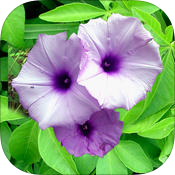
Suburban and Environmental Weeds of South East Queensland is now available as a free iOS app via the iTunes store.
Suburban and Environmental Weeds of South-East Queensland is an invaluable resource to advisors, researchers, students, landcare and bushcare volunteers, weed control officers and anyone interested in learning more about the weeds of south-eastern Queensland and north-eastern New South Wales.
Click here to view.
 If you would like to get a feel for how a Lucid Mobile diagnostic key works, please look at a YouTube video that has been created by the MyCrop team in Western Australia. They have already developed three apps for Wheat, Barley and Canola, as previously reported, and now have plans to develop similar apps for other crops. You can access the online version of these apps from the WA Department of Agriculture and Food website.
If you would like to get a feel for how a Lucid Mobile diagnostic key works, please look at a YouTube video that has been created by the MyCrop team in Western Australia. They have already developed three apps for Wheat, Barley and Canola, as previously reported, and now have plans to develop similar apps for other crops. You can access the online version of these apps from the WA Department of Agriculture and Food website.
Lucid Builder/Player Update

Don't forget to update to the latest Lucid Builder available on Lucidcentral.org. This update addresses a number of changes to the Java Runtime Environment (JRE) and contains the latest Java security certificates. Also update to the latest JRE, free from www.java.com. You can check if you're update by clicking here.